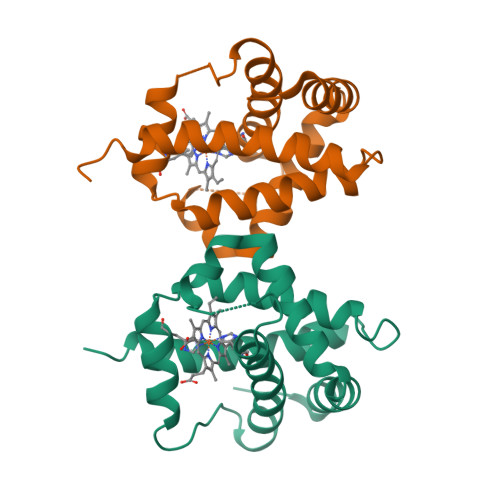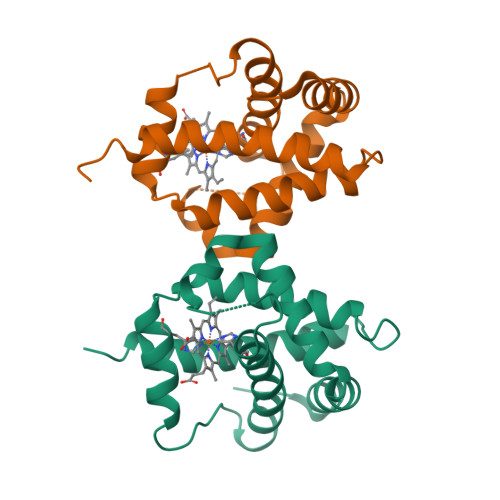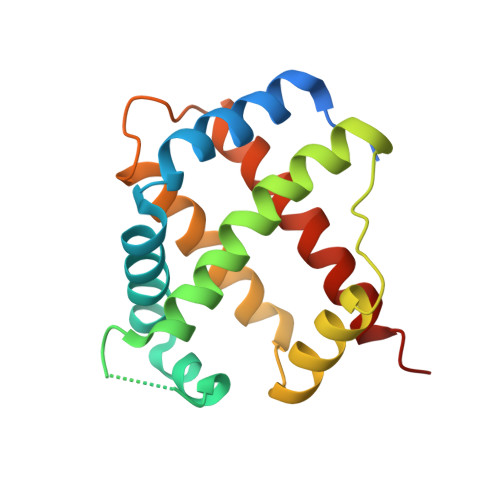Oxidative Implications of Substituting a Conserved Cysteine Residue in Sugar Beet Phytoglobin BvPgb 1.2.
Christensen, S., Groth, L., Leiva-Eriksson, N., Nyblom, M., Bulow, L.(2022) Antioxidants (Basel) 11
- PubMed: 36009334
- DOI: https://doi.org/10.3390/antiox11081615
- Primary Citation of Related Structures:
7Z1U, 7ZOS - PubMed Abstract:
Phytoglobins (Pgbs) are plant-originating heme proteins of the globin superfamily with varying degrees of hexacoordination. Pgbs have a conserved cysteine residue, the role of which is poorly understood. In this paper, we investigated the functional and structural role of cysteine in BvPgb1.2, a Class 1 Pgb from sugar beet ( Beta vulgaris ), by constructing an alanine-substituted mutant (Cys86Ala). The substitution had little impact on structure, dimerization, and heme loss as determined by X-ray crystallography, size-exclusion chromatography, and an apomyoglobin-based heme-loss assay, respectively. The substitution significantly affected other important biochemical properties. The autoxidation rate increased 16.7- and 14.4-fold for the mutant versus the native protein at 25 °C and 37 °C, respectively. Thermal stability similarly increased for the mutant by ~2.5 °C as measured by nano-differential scanning fluorimetry. Monitoring peroxidase activity over 7 days showed a 60% activity decrease in the native protein, from 33.7 to 20.2 U/mg protein. When comparing the two proteins, the mutant displayed a remarkable enzymatic stability as activity remained relatively constant throughout, albeit at a lower level, ~12 U/mg protein. This suggests that cysteine plays an important role in BvPgb1.2 function and stability, despite having seemingly little effect on its tertiary and quaternary structure.
Organizational Affiliation:
Pure and Applied Biochemistry, Department of Chemistry, Lund University, 22100 Lund, Sweden.

















